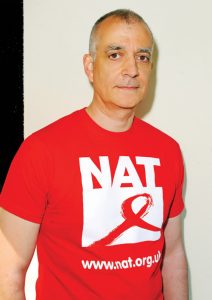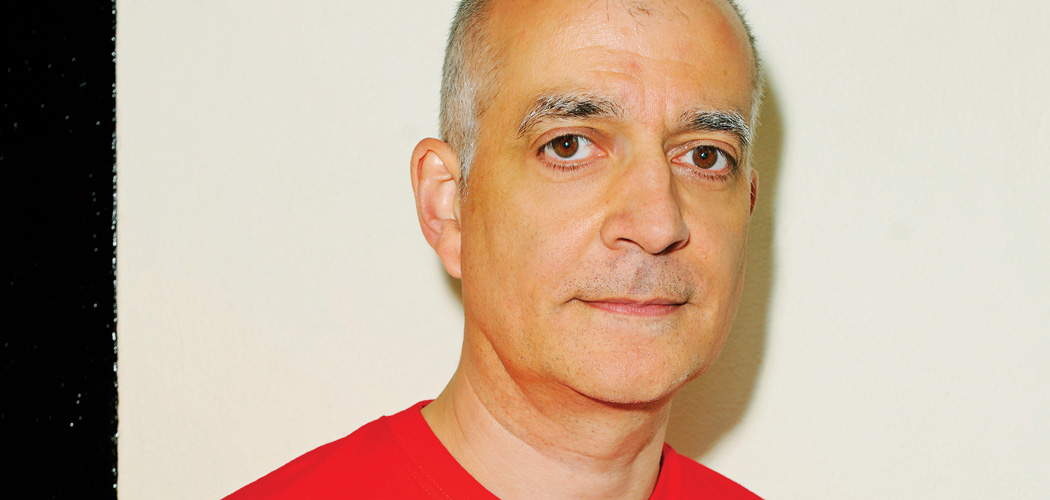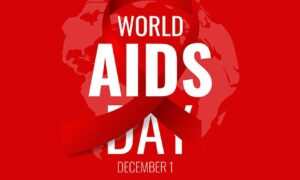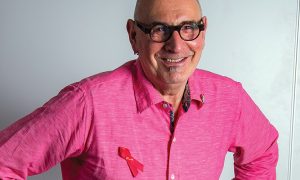The National AIDS Trust’s Director of Strategy, Yusef Azad, on how the gay community had to learn to live with HIV.

All experience becomes first memory, and then history. And HIV is no exception. What HIV means to each Boyz reader will depend not just on our personal experience of HIV – our sex life, our lovers, our friends, our tests, perhaps our diagnosis – but also on when we were born…
It’s World AIDS Day 2016 – exactly 35 years since the first diagnosis of HIV, 25 years since the first World AIDS Day. So much time has elapsed. We can’t expect every gay man to feel the same way about either HIV, or World AIDS Day for that matter.
Antiretroviral therapy became available in 1996 in the UK. Within a matter of weeks the hospital wards were closing and men, thought to be on the brink of death, were going home to live the rest of a now unimaginably long life. Twenty years ago.
For most gay men under the age of 35 or so, this is history. And gay men below that age may be interested in history, or they may not be. They may have seen the film Philadelphia, or read the novels and seen the documentaries of those times, or may know friends or family or partners who lived through them. But they didn’t see their friends or lovers die terribly and feel helpless by their side, or witness the homophobic backlash against gay lives and dignity in such actions as the UK Government’s Section 28 (which continues to cast its long shadow over the education of our young people). Kaposi’s sarcoma, night sweats, buddies, AZT – there is a whole vocabulary now consigned to the archives which describes the vivid memories and biographies of Boyz readers old enough to have lived though those days as sexually active adults.
They don’t remember the early accounts in the newspapers of this strange illness across the Atlantic. I do. My ‘HIV generation’ – who are now in their mid-30s to mid-50s – moved into adulthood through the 15 years of the HIV epidemic which passed without any really effective treatment. I recall as a teenager – about to go to university, aware that I fancied men – lying on the floor of my parents’ sitting room reading about this ‘disease’ which affects haemophiliacs, Haitians and homosexuals. How strange, I thought, that to be at risk you had to have a label beginning with ‘H’. Of course this was just an early example of the misinformation and ignorance surrounding HIV as the epidemic unfolded in the 1980s (and that ignorance hasn’t entirely gone way either).
But the chill of the news affected my generation profoundly. Every ailment was possibly HIV. Every lover an object both of desire and dread. Some of us avoided sex more or less completely, or perhaps kept the closet doors firmly shut. Some of us had sex in this threatening world – with desire, with fear, with lust, with tenderness and love, or not so tenderly, with courage, without it. Some of us didn’t get HIV, and some of us did. Some of us died. And some of us lived and are still living.
Even for those under 35, the experience of HIV is not uniform. Some of us will remember much more visible HIV education in the late 90s and noughties than that currently funded by national and local government. We remember the handfuls of pills which had to be taken by people with HIV in the early days of treatment and the serious side-effects.
Now treatment is, for most, just one pill a day, with few or no side-effects. If diagnosed in good time, a normal life expectancy is possible. Well over 90% of people with HIV on treatment have an undetectable viral load, which means they cannot pass HIV on to others. HIV test results come back within minutes. And now there is PrEP, which at last can provide an extremely effective protection to add to our condom use.
What the majority of us can’t now imagine is a world without HIV. Or the gay community without HIV. Or gay sex without HIV, as that additional ghostly presence that may or may not be acknowledged but is always somewhere at the back of our minds. Gay men in their mid-50s and older can remember such a time. Yes of course pre-1981 there were still other STIs. They were lived with, diagnosed and treated. But there was no ‘HIV positive’ or ‘HIV negative’. No issues around disclosure of HIV status. No daily taking of your HIV medication. No negotiation of risk and safety. No condoms. No anxiety as you wait for an HIV test result.
Will we ever experience such a time again, with HIV no longer an issue? It’s possible, yes. If we use PrEP wisely alongside condoms and HIV testing we could see at last a decline in rates of HIV transmission. And research on an HIV vaccine and an HIV cure continues, with some hope of success in the longer term.
But even if we do reach a world without HIV, it will not be the same world for gay men as that before 1981 when HIV first came on the scene. We can’t turn back the clock. It has changed us all forever – that’s what history does. For a start, we think about health and value it in a new and different way – our sexual health, our mental health, our wider physical health. But even more importantly, HIV has shown us who we are; that we can be brave, caring, resourceful, angry, unashamed and proud in the face of calamity. That is a cultural legacy which every gay man is shaped by and benefits from, even those of us too young to remember the early years of the epidemic.
And it has shown us also what wider society is like, for good and ill; that it can show solidarity and compassion. But also that below the polite surface, prejudice can lurk. Even a few weeks ago we heard, in NHS England’s response to the High Court decision on PrEP, moralising comments on gay men’s health which could have come from the 1980s. The fight isn’t over.
How we respond to World AIDS Day is up to each of us. Our different responses will be shaped by the wide variety of experiences I have just touched on briefly. But let’s not pretend as gay men that HIV has nothing to do with us. It does. For all of us. That’s something worth thinking about, and acting on.
For more on the history of HIV, go to NAT’s HIV timeline at nat.org.uk/sites/default/files/teachers-resources/2016_WAD_Timeline.pdf.














